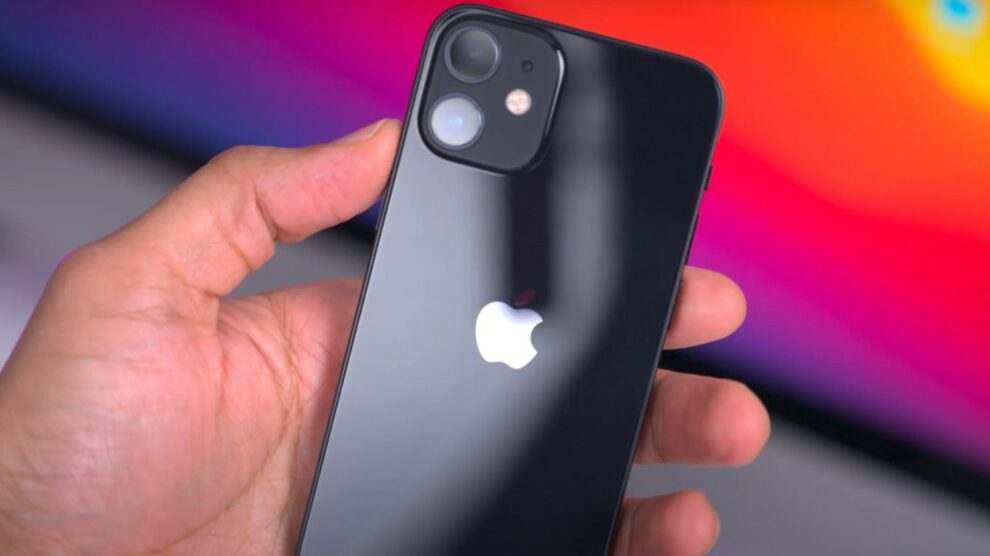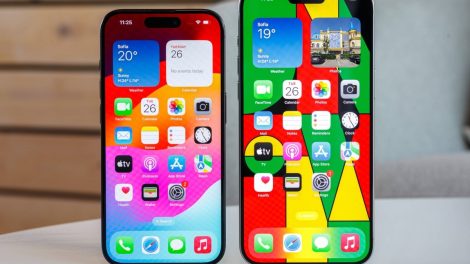Hold onto your iPhones, folks, because the rumor mill is churning again, and this time it’s all about the iPhone 16 and a potential return to a familiar (and slightly controversial) design choice: vertically aligned cameras. Remember the iPhone 12? Yeah, that’s the look we might be revisiting.
Back to the 12?
Rumors have been swirling for months about the iPhone 16’s design, with some leaks pointing towards a more dramatic overhaul. But this latest whisper suggests a more conservative approach, ditching the diagonal camera bump of the past few generations and bringing back the vertically aligned lenses of the iPhone 12.
Why the Vertical Vibe?
While some might welcome the nostalgic return, others might be wondering why Apple would ditch its recent design direction. The reasons could be varied:
- Spatial Video Focus: There’s talk that Apple might be prioritizing features like spatial video for the iPhone 16, and a vertically aligned camera layout could be better suited for capturing that immersive footage.
- Camera Bump Reduction: The new camera bump might be smaller and less conspicuous, addressing one of the main complaints about the current design.
- Production Efficiency: A simpler camera layout could potentially be cheaper and easier to mass produce, benefiting both Apple and consumers.
Of Course, It’s All Still Speculation:
It’s important to remember that these are just rumors, and Apple hasn’t confirmed anything about the iPhone 16 yet. We’ll have to wait until next year’s September event to get the official scoop.
But Here’s What We Do Know:
- iPhone 16 is likely coming in September 2024.
- New features and improvements are expected, including potential camera upgrades and performance boosts.
- The design remains a mystery, but the vertical camera rumor keeps getting traction.
So, iPhone fans, buckle up! The iPhone 16 is still shrouded in secrecy, but this latest rumor gives us a tantalizing glimpse at what might be in store. Whether you’re Team Vertical or Team Diagonal, one thing’s for sure: Apple knows how to keep us guessing, and we can’t wait to see what they have up their sleeve next year.
Remember:
- iPhone 16 is rumored to feature vertically aligned cameras, similar to the iPhone 12.
- This design choice could be driven by spatial video focus, camera bump reduction, or production efficiency.
- The official design remains unconfirmed, and we’ll need to wait until the September 2024 event for the full reveal.
- Regardless of the camera layout, the iPhone 16 is sure to bring new features and improvements.
So, whether you’re a die-hard Apple fan or just casually interested in the tech world, keep your eyes peeled for more iPhone 16 leaks and rumors. This one’s shaping up to be a doozy!
Examining the Potential Drivers Behind a Redesign
As we analyze this latest iPhone 16 rumor, it’s worth taking a closer look at the possible motivations behind ditching the signature diagonal camera bump in favor of returning to vertically stacked lenses.
Emphasis on Spatial Video
One theory behind the rumored redesign centers on Apple’s reported focus on enhancing spatial audio and video capabilities. Features like immersive 3D video could be headline additions on the iPhone 16, and centering the camera lenses vertically might better optimize the hardware for those experiences.
The current wide angle and telephoto lens placement isn’t ideal for stereoscopic video capture needed for more advanced depth effects. So if Apple wants to push the boundaries with the iPhone’s video toolkit, a stacked camera orientation aligned to portrait mode could make sense.
Camera Bump Complaints
Another driver may be addressing complaints about the growing camera bump size on recent iPhone models. As Apple packed in more lenses and sensors, the bump grew increasingly prominent and became an aesthetic turn-off for some users.
Returning to a more streamlined vertical alignment could allow Apple to add new camera hardware while reducing the bump’s footprint on the iPhone 16’s backside. This might restore a sleeker overall device profile reminiscent of vintage iPhone designs.
Production and Pricing Factors
And finally, it’s worth noting manufacturing and cost implications. From a production standpoint, vertical alignment provides a simpler, more standardized camera layout. And a smaller bump size also means less glass and fewer other materials.
Both these factors translate to potential cost savings for Apple. And in an environment where inflation and recession concerns loom, passing on pricing relief to consumers could be part of the equation as well behind any overarching design or component changes.
What Does This Mean for the iPhone 16?
Stepping back, a return to vertically aligned cameras wouldn’t necessarily be revolutionary from a functional standpoint. Today’s diagonal design works perfectly fine, even if the bump itself isn’t loved universally.
Instead, this shift would likely be driven by enhancing specific experiences like spatial video or improving production processes. And aesthetically, it could be an attempt to call back to nostalgic iPhone designs of the past.
In the end, while a polarizing camera design choice for some, vertical alignment bring few drawbacks. And if other upgrades like performance improvements, battery life gains, and new software capabilities accompany the change, the controversial bump could fade as a priority issue for buyers.
As with any leaks this far out though, it’s wise to take rumors with a grain of salt. And even if vertical cameras return, they would simply form one piece of a larger iPhone 16 puzzle. So reserve judgement until Apple confirms details at their September 2024 keynote!
What Else Might We See With the iPhone 16?
Shifting focus beyond the camera configuration itself, let’s dive into some broader iPhone 16 rumors and expectations worth tracking over the coming year as Apple’s 2024 flagship inches towards launch.
Faster A17 Chip
Apple follows a very consistent annual cadence when it comes to chip upgrades. So after the A16 debuts this fall with the iPhone 14 generation, you can safely bet the A17 chip will power the iPhone 16 lineup.
With TSMC’s next-generation 3nm process entering production, Apple should realize additional performance and efficiency gains with its proprietary silicon. The A17 will likely incorporate an updated mix of high-power and high-efficiency CPU cores fine-tuned for iPhone’s needs.
Overall then, expect CPU and GPU advancements measured in the 10-15% range year-over-year – enough to clearly feel an extra kick during demanding tasks like gaming or video editing.
Even Better Cameras
We already touched on rumors surrounding spatial video as one catalyst behind the possible camera design change. But on top of any physical layout adjustments, you can safely expect Apple to pack substantive camera hardware and software improvements into the iPhone 16 mix as well.
Larger sensors, updates to features like Night Mode, Deep Fusion, and Smart HDR, along with computational advancements in areas like quality/clarity and dynamic range all seem likely to debut. Apple has delivered huge camera leaps every other year, so the iPhone 16 looks to uphold that trend.
New Display Tech?
With the iPhone 14 lineup, Apple reserved their new Always-On display exclusively for the Pro models. But with 2024’s iPhone 16, don’t be surprised if always-on expands across the non-Pro devices as well.
There are also early rumblings about Apple potentially implementing advanced OLED display tech like tandem or Multi-Tandem architecture for increased brightness and efficiency.
And while less likely, whispers of testing for 10K Apple displays raises outside possibilities too! But keep expectations for display changes measured until further leaks emerge.
USB-C Instead of Lightning
Lastly, 2024 could finally be the year Apple adopts USB-C instead of their proprietary Lightning port. Rumblings and expectations are getting louder, especially with EU regulations essentially mandating the change for compatibility.
An iPhone 16 with USB-C would enable faster charging, data transfers, connectivity with peripherals, and convenience/compatibility across Apple’s wider device ecosystem. So say farewell to Lightning and get ready for USB-C!
Of course, wireless charging would still supplement any wired improvements. But a standardized USB-C port would mark a significant and much-anticipated shift after years of Lightning exclusivity.
The Road Ahead for Apple
Stepping back, Apple stands at an intriguing inflection point looking towards their 2024 iPhone. Various market forces and consumer preferences pulling the company in multiple directions when it comes to priorities and design choices.
On one hand, nostalgia fuels opportunities for callbacks to heritage iPhone eras. But on the other, competition and innovation necessitate leaning into next-generation capabilities that push the boundaries of mobile technology.
It will be exciting to see how Apple chooses to balance those forces with the iPhone 16. A potential vertically aligned camera return hints at a nostalgic aesthetic approach. But expected advances across displays, chipsets, charging, and cameras point towards a future-forward technological path.
At the intersection of retro appeal and cutting-edge innovation lies the dawning iPhone 16. And if Apple plays their cards rights, they could have a winning hand with 2024’s flagship. vrSo stay tuned for many more rumors along the winding road ahead!










Add Comment